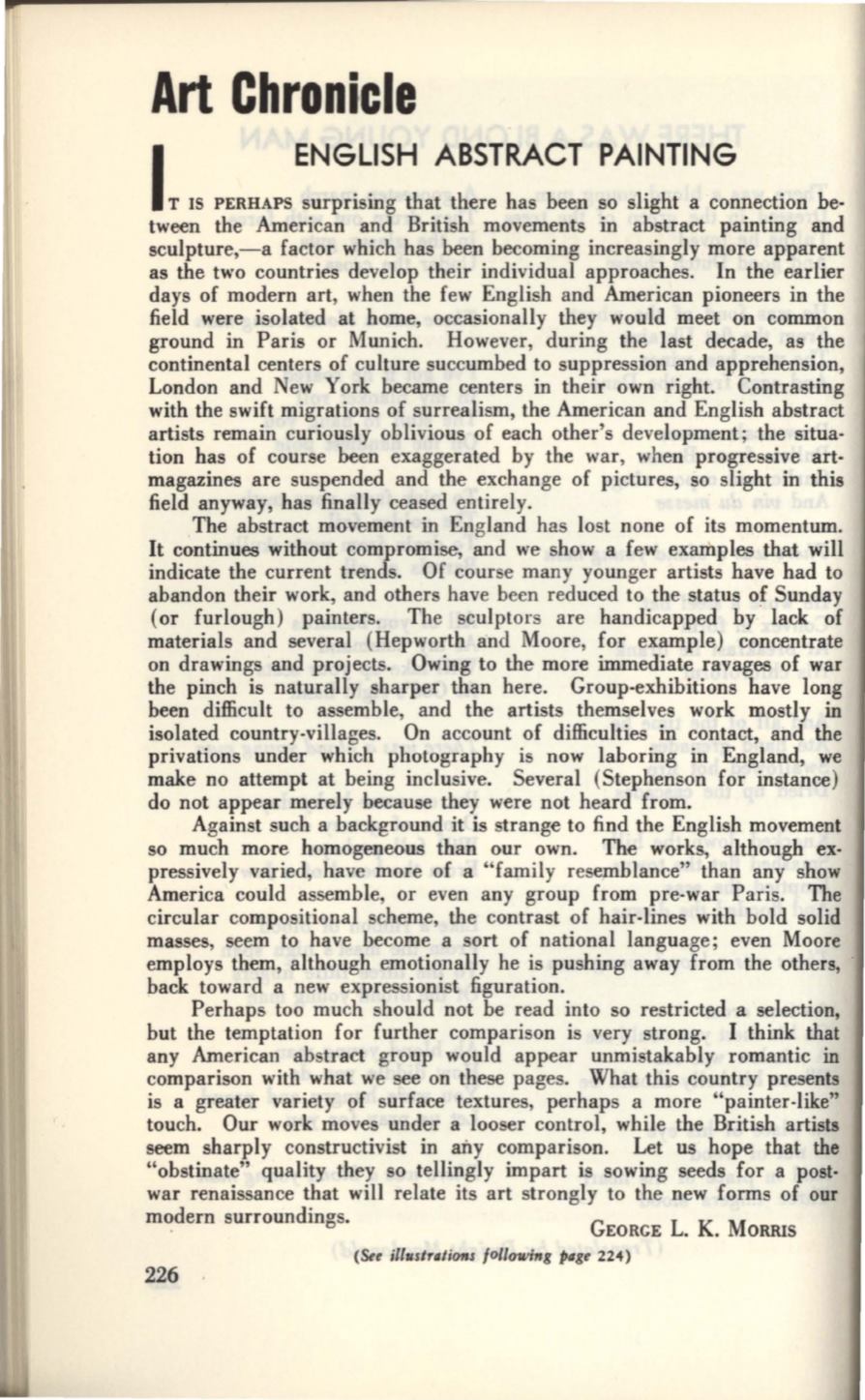
Art Chronicle
I.
IS PERHAPS
~:~~~~~ha~~.~~~~~~n :~:~h:~~:nection
*
tween the American and British movements in abstract painting and
sculpture,-a factor which has been becoming increasingly more apparent
as the two countries develop their individual approaches. In the earlier
days of modern art, when the few English and American pioneers in the
field were isolated at home, occasionally they would meet on common
ground in Paris or Munich. However, during the last decade, as the
continental centers of culture succumbed to suppression and apprehension,
London and New York became centers in their own right. Contrasting
with the swift migrations of surrealism, the American and English abstract
artists remain curiously oblivious of each other's development; the situa·
tion has of course been exaggerated by the war, when progressive art–
magazines are suspended and the exchange of pictures, so slight in this
field anyway, has finally ceased entirely.
The abstract movement in England has lost none of its momentum.
It continues without compromise, and we show a few examples that will
indicate the current trends. Of course many younger artists have had to
abandon their work, and others have been reduced to the status of Sunday
(or furlough) painters. The sculptors are handicapped by lack of
materials and several (Hepworth and Moore, for example) concentrate
on drawings and projects. Owing to the more immediate ravages of war
the pinch is naturally sharper than here. Group-exhibitions have long
been difficult to assemble, and the artists themselves work mostly in
isolated country-villages. On account of difficulties in contact, and the
privations under which photography is now laboring in England, we
make no attempt at being inclusive. Several (Stephenson for instance)
do not appear merely because they were not heard from.
Against such a background it is strange to find the English movement
so much more homogeneous than our own. The works, although ex–
pressively varied, have more of a "family resemblance" than any show
America could assemble, or even any group from pre·war Paris. The
circular compositional scheme, the contrast of hair-lines with bold solid
masses, seem to have become a sort of national language; even Moore
employs them, although emotionally he is pushing away from the others,
back toward a new expressionist figuration.
Perhaps too much should not be read into so restricted a selection,
but the temptation for further comparison is very strong. I think that
any American abstract group would appear unmistakably romantic in
comparison with what we see on these pages. What this country presents
is a greater variety of surface textures, perhaps a more "painter-like"
touch. Our work moves under a looser control, while the British artists
seem sharply constructivist in any comparison. Let us hope that the
"obstinate" quality they so tellingly impart is sowing seeds for a post–
war renaissance that will relate its art strongly to the new forms of our
m~dern
surroundings.
GEORGE
L.
K. MoRRis
(See illustrations following p11ge
224)
226


